Learn how to make pasta at home! This 4-ingredient homemade pasta recipe is easy to make, and it yields chewy, delicious noodles every time.
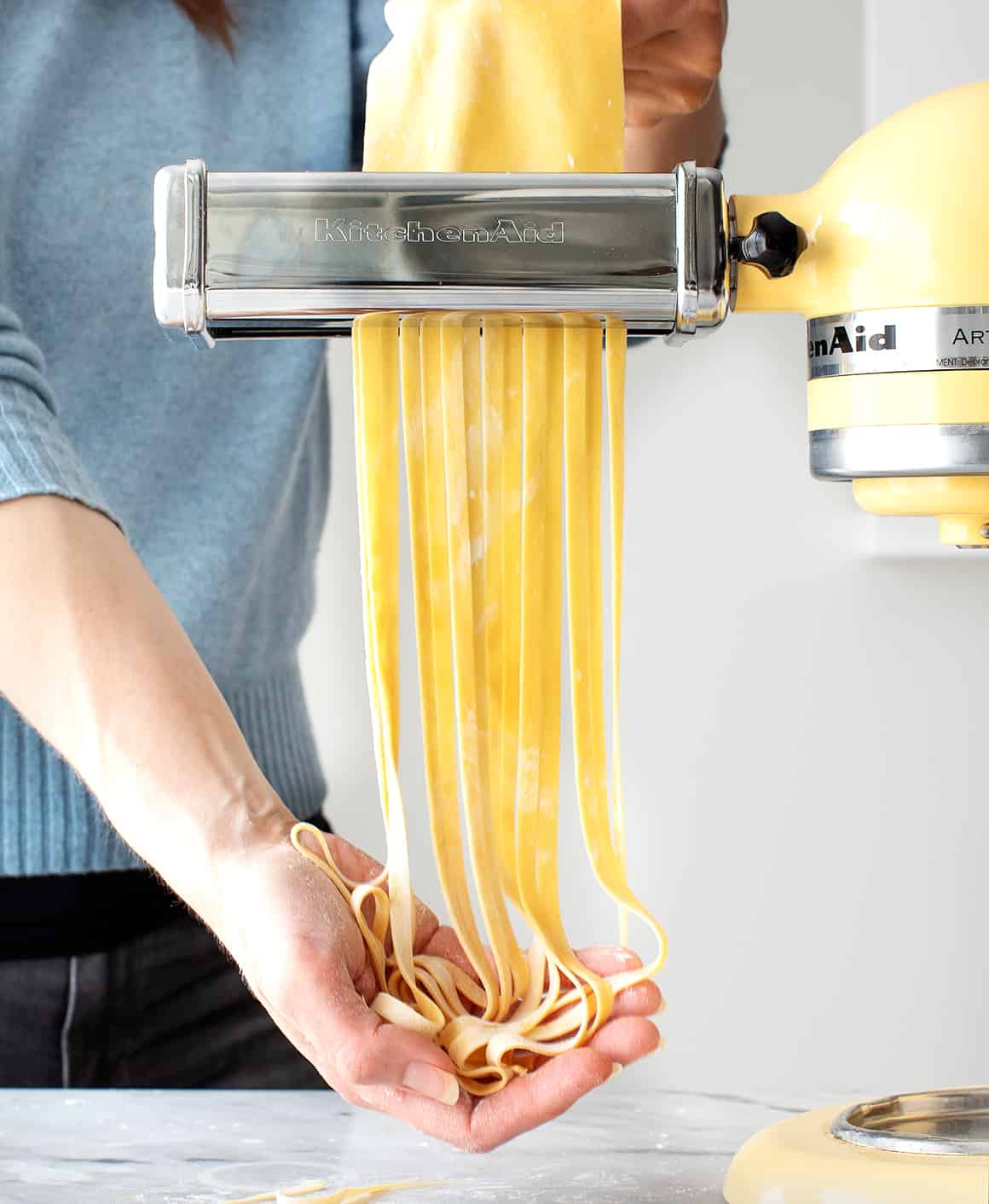
This homemade pasta recipe is our new favorite cooking project! Lately, Jack and I have been spending even more time than usual in the kitchen, experimenting with bread, baked goods, and even okonomiyaki. But we keep coming back to homemade pasta. It’s super fun to make together, and it only requires a handful of basic ingredients. Of course, the fact that it’s absolutely delicious doesn’t hurt either. 🙂
My homemade pasta recipe refers to the pasta maker attachment for the KitchenAid Stand Mixer, which is how we roll out our fresh pasta at home. If you don’t have a KitchenAid, don’t worry! You could also roll out this pasta dough according to the instructions on a regular pasta maker. However you make it, I hope you try this recipe. It’s an easy, fun way to spend an hour in the kitchen with someone you love, and at the end, you get to eat a big plate of chewy noodles with a perfect al dente bite.

Homemade Pasta Recipe Ingredients
You only need 4 ingredients to make delicious fresh pasta at home, and there’s a good chance you have all of them on hand already:
- All-purpose flour – In the past, I thought you needed 00 flour or semolina flour to make great fresh pasta, but this homemade pasta recipe proved me wrong. In it, regular all-purpose flour yields chewy, bouncy noodles every time.
- Eggs – The key ingredient for adding richness and moisture to the dough!
- Olive oil – Along with the eggs, a splash of olive oil moistens the dough and helps it come together.
- Salt – Add it to the dough and the pasta water for the best flavor.
Find the complete recipe with measurements below.

How to Make Pasta
Ready to learn how to make pasta? Check out this step-by-step guide first, and then find the full recipe at the bottom of this post!
First, make a nest with the flour on a clean work surface. Add the remaining ingredients to the center and use a fork to gently break up the eggs. Try to keep the flour walls intact as best as you can!
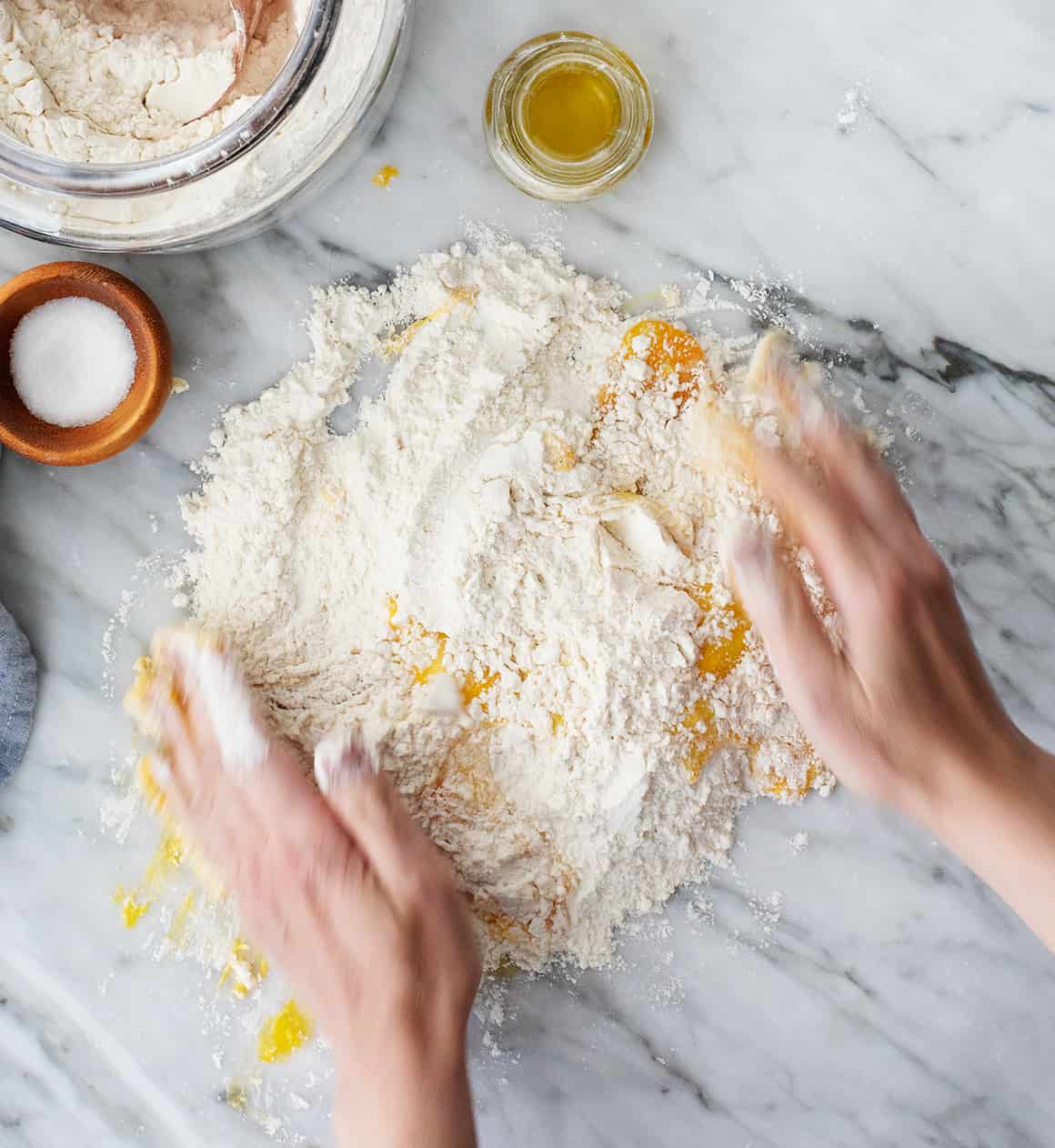
Next, use your hands to gently mix in the flour. Continue working the dough to bring it together into a shaggy ball.
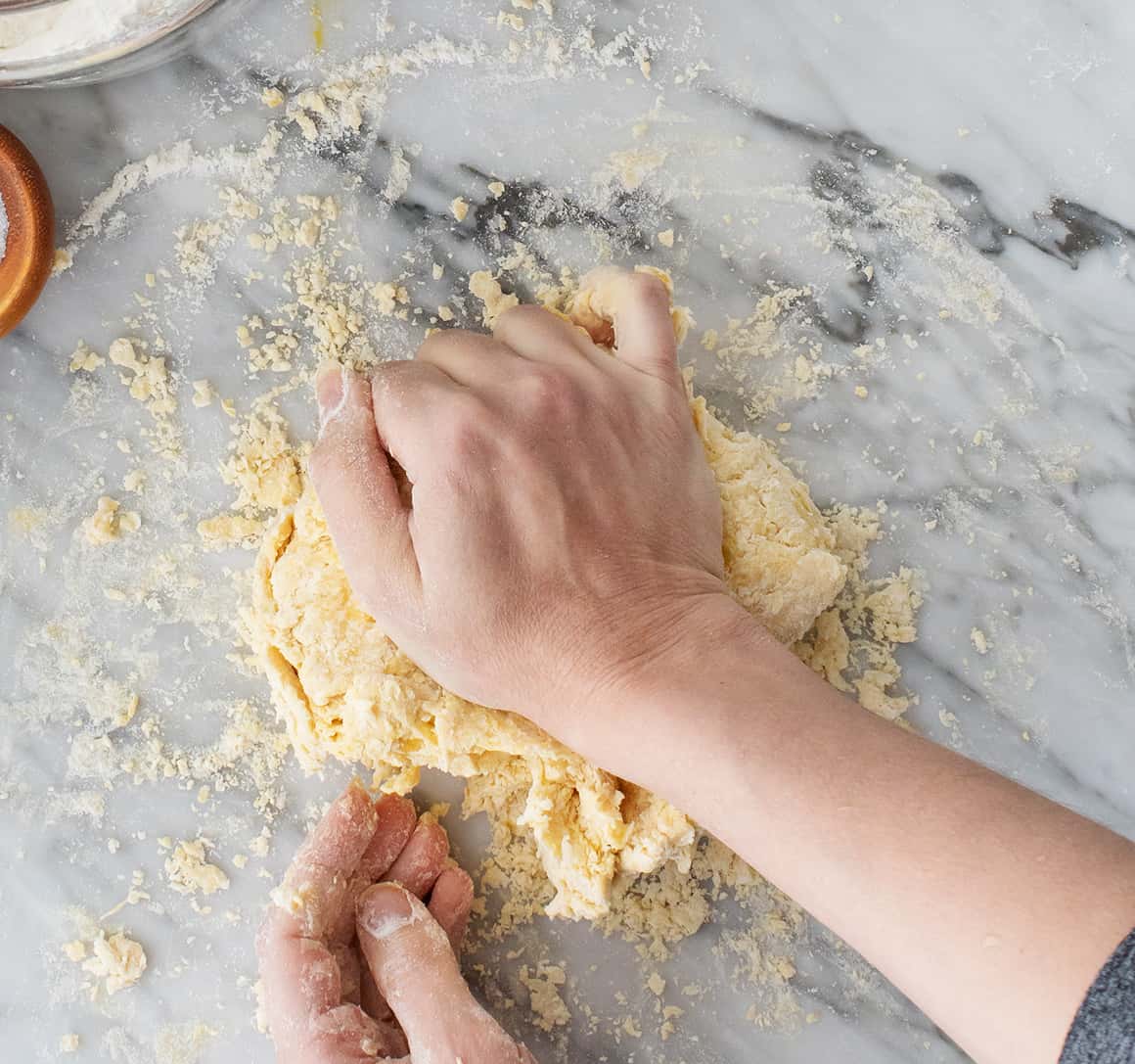
Then, knead! At the beginning, the dough should feel pretty dry, but stick with it! It might not feel like it’s going to come together, but after 8-10 minutes of kneading, it should become cohesive and smooth:

If the dough still seems too dry, sprinkle your fingers with water and continue kneading to incorporate it into the dough. If the dough becomes too sticky, dust more flour onto your work surface.
When the dough comes together, shape it into a ball and wrap it in plastic wrap. Let the dough rest at room temperature for 30 minutes.
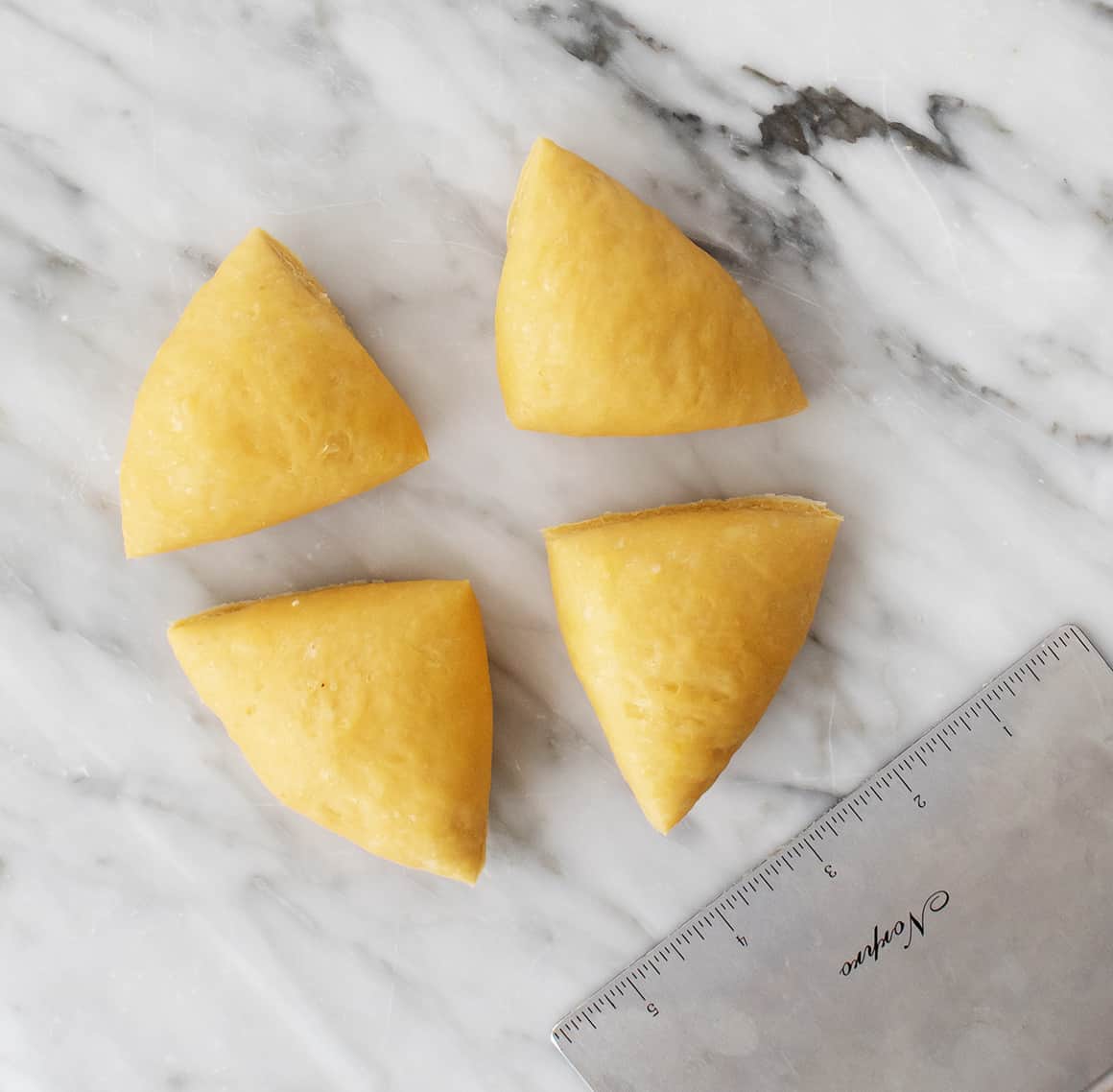
After the dough rests, slice it into 4 pieces.
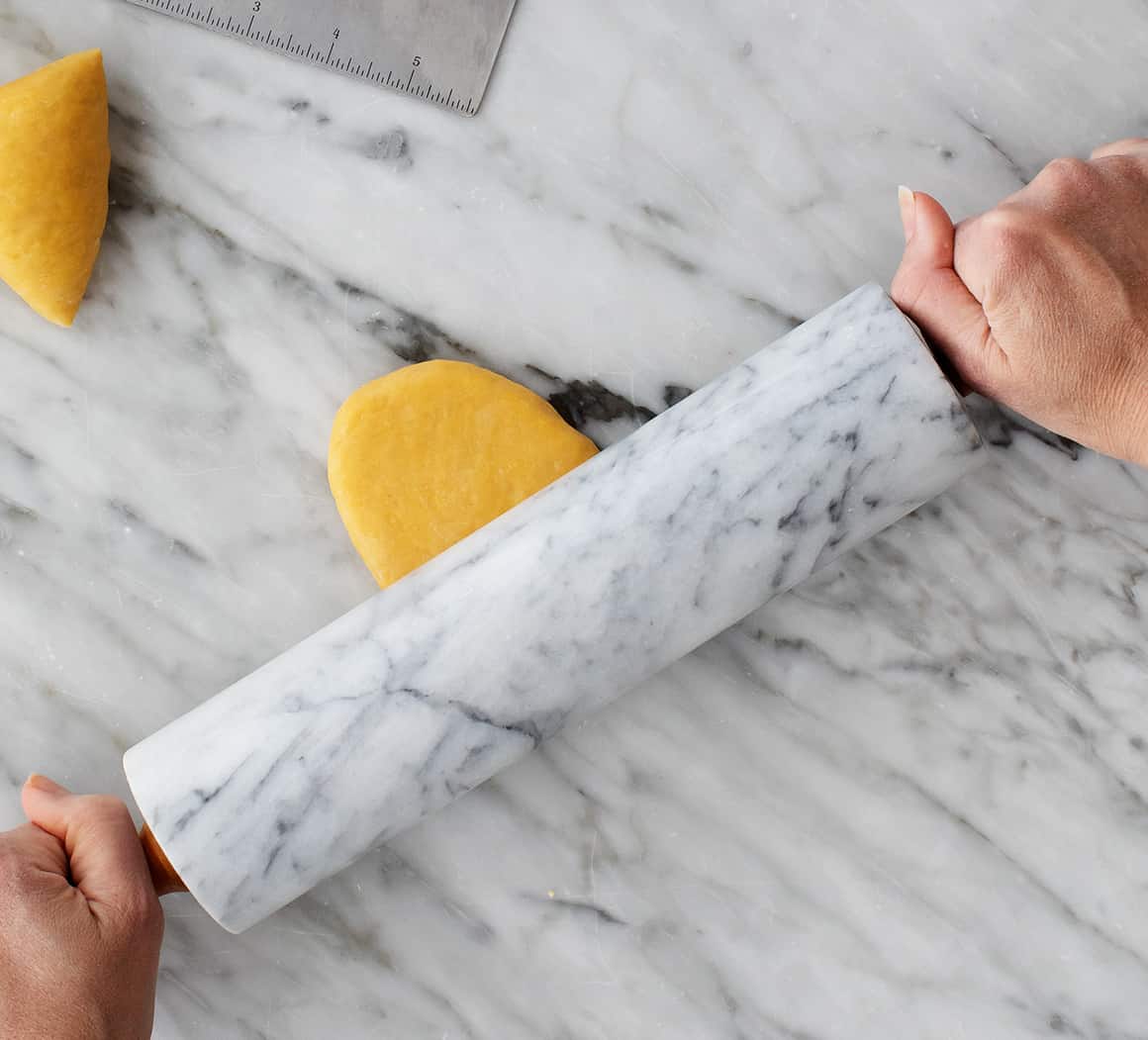
Use a rolling pin or your hands to gently flatten one into an oval disk.

Then, run it through the widest setting of your pasta maker (level 1 on the KitchenAid attachment). I run the dough through the pasta maker 3 times on this setting before proceeding to the next step. If you don’t have the KitchenAid attachment, roll out the dough according to your pasta maker’s instructions.

Next, fold the dough… if you want to. This step is somewhat optional, but it will make your final pasta sheet more rectangular, which will yield more long strands of pasta. Plus, it’s super simple! Just lay the dough flat and fold both short ends in to meet in the center.

Then, fold it in half lengthwise to form a rectangle.

Once you’ve folded the dough, roll it out to your desired thickness. On my KitchenAid attachment, I run it through the pasta roller three times on level 2, three times on level 3, and one time each on levels 4, 5, and 6.
Repeat these steps with the remaining dough pieces. Each time you finish with a piece of dough, lay one half of it on a lightly floured baking sheet. Sprinkle the dough with flour, and fold the other half on top. Sprinkle the top with flour, too!
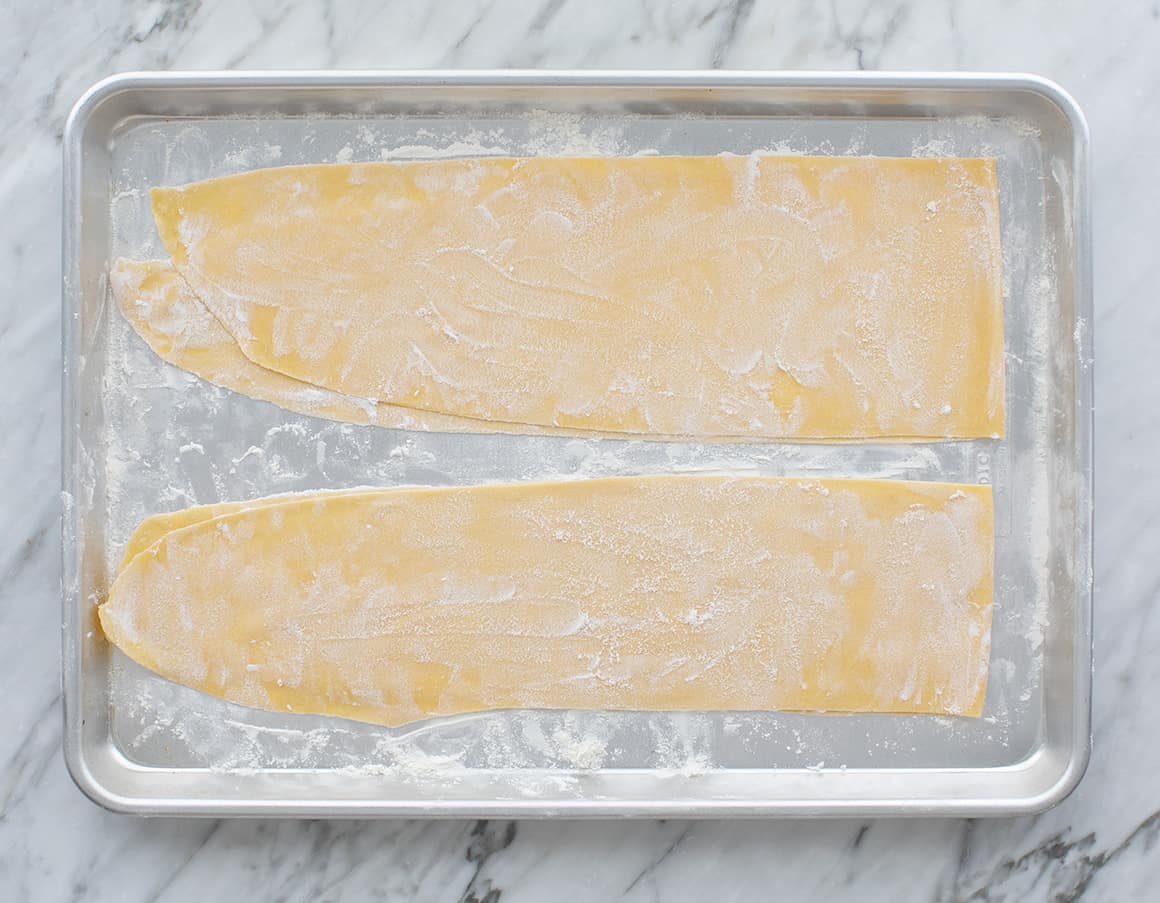
Finally, cut and cook the pasta. Run the pasta sheets through your desired pasta cutter attachment. Cook the noodles in a pot of boiling salted water for 1 minute, and enjoy!
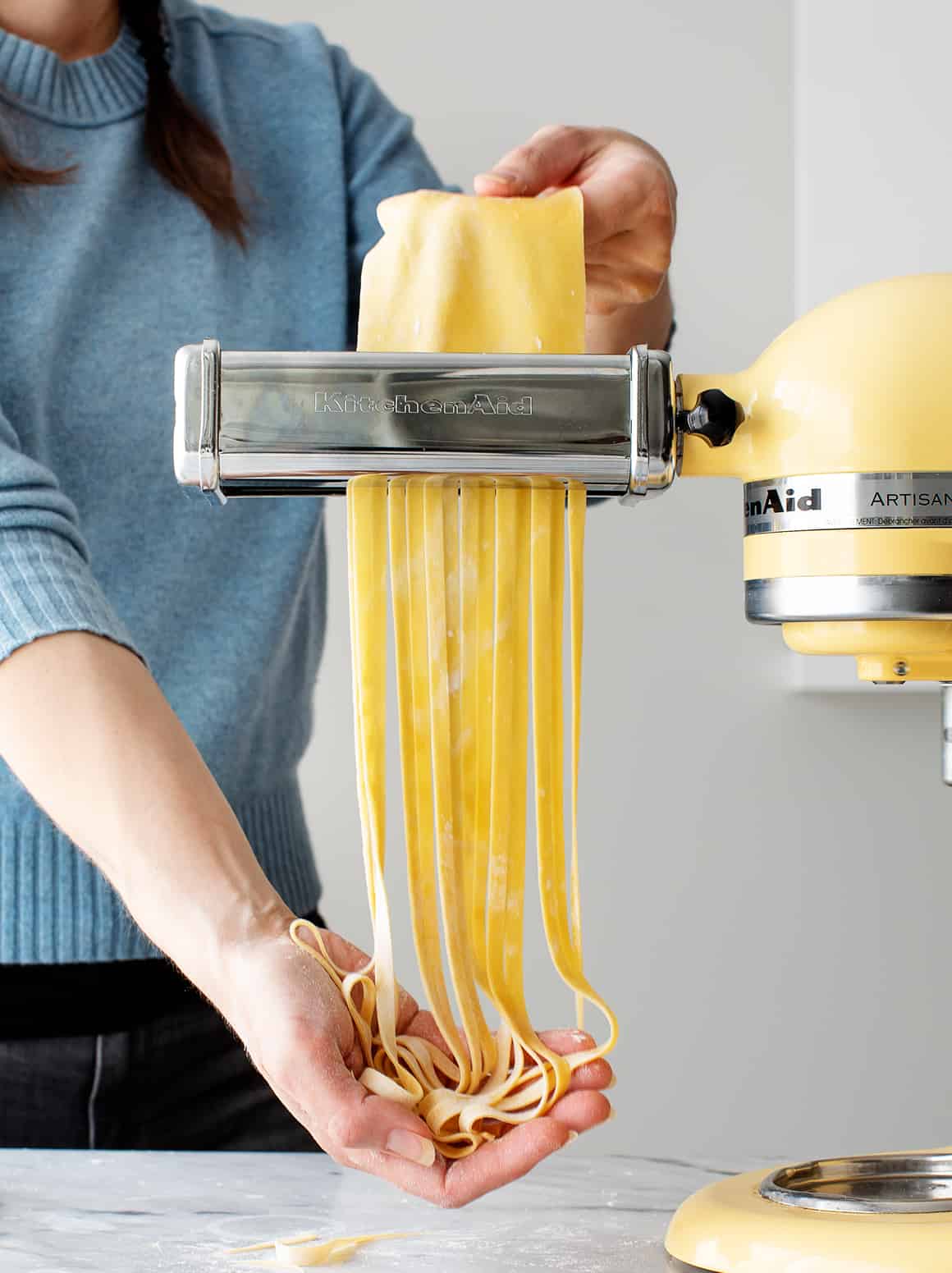
Homemade Pasta Serving Suggestions
If you’ve never had fresh pasta before, you’re in for a treat! Its chewy, bouncy texture and rich flavor make it so much better than the dried pasta at the store. In fact, these noodles are so good that we usually serve them really simply. They’re fantastic with marinara sauce, pesto, homemade Alfredo sauce, or olive oil and vegan Parmesan or Parmesan cheese.
Of course, they’re delicious in larger pasta dishes, too. Use them instead of dried pasta in any of these recipes:
- Tagliatelle with Asparagus & Peas
- Spaghetti Aglio e Olio
- Fettuccine Alfredo
- Easy Pesto Pasta
- Roasted Vegetable Pasta
- Linguine with Lemon and Tomatoes
- Garlic Herb Mushroom Pasta
Find more of my favorite pasta recipes here!


Homemade Pasta
Equipment
- KitchenAid Mixer (the stand mixer to use the pasta attachment)
- Pasta Attachment (my favorite KitchenAid attachment!)
- Baking Sheets (I use these nonstick ones from Nordic Ware)
Ingredients
- 2 cups all-purpose flour, spooned & leveled
- 3 large eggs
- ½ teaspoon sea salt
- ½ tablespoon extra-virgin olive oil
Instructions
- Place the flour on a clean work surface and make a nest. Add the eggs, olive oil, and salt to the center and use a fork to gently break up the eggs, keeping the flour walls intact as best as you can. Use your hands to gently bring the flour inward to incorporate. Continue working the dough with your hands to bring it together into a shaggy ball.
- Knead the dough for 8 to 10 minutes. At the beginning, the dough should feel pretty dry, but stick with it! It might not feel like it’s going to come together, but after 8-10 minutes of kneading, it should become cohesive and smooth. If the dough still seems too dry, sprinkle your fingers with a tiny bit of water to incorporate. If it’s too sticky, dust more flour onto your work surface. Shape the dough into a ball, wrap in plastic wrap, and let rest at room temperature for 30 minutes.
- Dust 2 large baking sheets with flour and set aside.
- Slice the dough into four pieces. Gently flatten one into an oval disk. Run the dough through the Pasta Roller Attachment or a pasta maker three times on level 1 (the widest setting).
- Set the dough piece onto a countertop or work surface. Fold both short ends in to meet in the center, then fold the dough in half to form a rectangle (see photo above).
- Run the dough through the pasta roller three times on level 2, three times on level 3, and one time each on levels 4, 5, and 6.
- Lay half of the pasta sheet onto the floured baking sheet and sprinkle with flour before folding the other half on top. Sprinkle more flour on top of the second half. Every side should be floured so that your final pasta noodles won't stick together.
- Repeat with remaining dough.
- Run the pasta sheets through the Pasta Cutter Attachment (pictured is the fettuccine cutter). Repeat with remaining dough. Cook the pasta in a pot of salted boiling water for 1 to 2 minutes.
Notes
adapted from Serious Eats






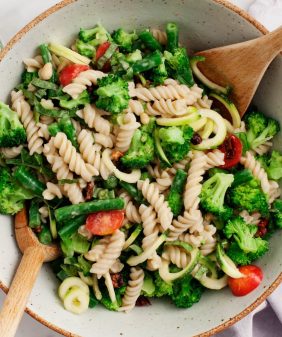





so, so, so dry. i ended up needing to add almost two extra tablespoons of water, and i followed the recipe exactly. even with the water, the edges of my pasta tore and flaked. disappointing 🙁
can you mix ap flour and semolina to make the dough
You can, just add water as necessary, as you knead it.
Hi there ! I was planning to make this recipe for spaghetti over the weekend and it’s my first time making fresh pasta… and I don’t have a kitchen aid , so would you recommend I use fresh pasta or just stick to dry pasta since I don’t hv the pasta roller … also how much does this recipe make in grams ? , thanks 🙂
Also I was planning to make the dough one day in advance and cut it and keep to save time when I hv to actually make it so how do you recommend storing the cut noodles ?
Hi, if it’s your first time making fresh pasta, I definitely recommend a pasta roller. You can do it with a rolling pin but it’ll be much more difficult to roll it thin and even.
I am making this with a culinary class. Would it be okay if we made the pasta one day, run it through the pasta pasta attachment on kitchen Aid Mixer, stored overnight, and cooked the next day
It will be fore Chicken alfredo
OMG. Recently bought pasta attachment for my Kitchenaid. This recipe was simple and easy. And it was so tasty. My husband even commented that he noticed the difference and that it was good.
Hi Lakeshia, I’m so glad you both enjoyed the recipe!
The easiest and best pasta recipe out there! I started this in a bowl and then transferred to kneading on a wood cutting board. It was so easy and came out great!
Great recipe. Only the second time we’ve made pasta but this dough was much easier to work than the one we used previously.
What is the calorie count?
How would I incorporate spinach into my pasta? How much spinach for your recipe? Should I blanch it first? Thanks!
Hi Andrea, I’m not sure, I haven’t tried it.
Please please please tell me why my little knots of cut pasta stick together. No matter how much flour I put when I group them the way I see in the pictures. The strands all stick together. All this time and effort to eat a ball of stuck together pasta. I’m so disappointed I’ve tried many times putting more and more flour and i dont know what is wrong.
Hi Elvira, make sure you flour every single step, especially the whole sheets before you cut them. I know it seems like a lot of flour, but if it’s sticky, more flour is always the solution.
Easy making for a beginner. Thank you for this recipe. I used my kitchen aid with a non-kitchen aid attachment I got from Amazon.
very yummy
yes yes yes yes yes yes yes yes yes
Hi Zach, did you knead for the whole 8 to 10 minutes. It should be really stiff until it’s kneaded for the full time. Did you change the flour type or any of the other ingredients?
Hi can this pasta be dried and stored for later?
Can this recipe be used for lasagna.
Can I make this recipe using 00 flour?
This recipe is perfect. I used “00” flour since I purchased it to re-attempt another recipe that I had recently made with a combo of semolina and all purpose flour. Wasn’t great. This turned out amazingly well. Silky but held the sauce that I served it with beautifully. I don’t have a pasta maker so I rolled out my dough as thin as possible by hand and then just sliced it into linguine. My arms are dead after all the kneading and rolling since this dough is super stiff, even after adding water. Lols. But this is my go-to recipe from now on. Thank you for sharing!
Aw, I’m so glad you loved it and that it was worth the arm effort!
Hi! I was wondering if anyone has made these noodles while cooking in a sauce instead of salted water? I’ve tried with other recipes and the noodles seem to come out gummy. I’m wanting to prefect my alfredo recipe since it’s my daughter’s favorite but she loves homemade noodles and I have yet to be able to combine the two. The noodles I have used for alfredo in the past are the same I use for chicken and noodles (dumplings). It just didn’t turn out the same.
Hi Stephanie, I’d still cook the noodles in boiling water for a little bit before adding to the alfredo sauce.
Thank you for the share, first time making pasta and it was perfect 🙂
I’m so glad it was perfect!
Love it